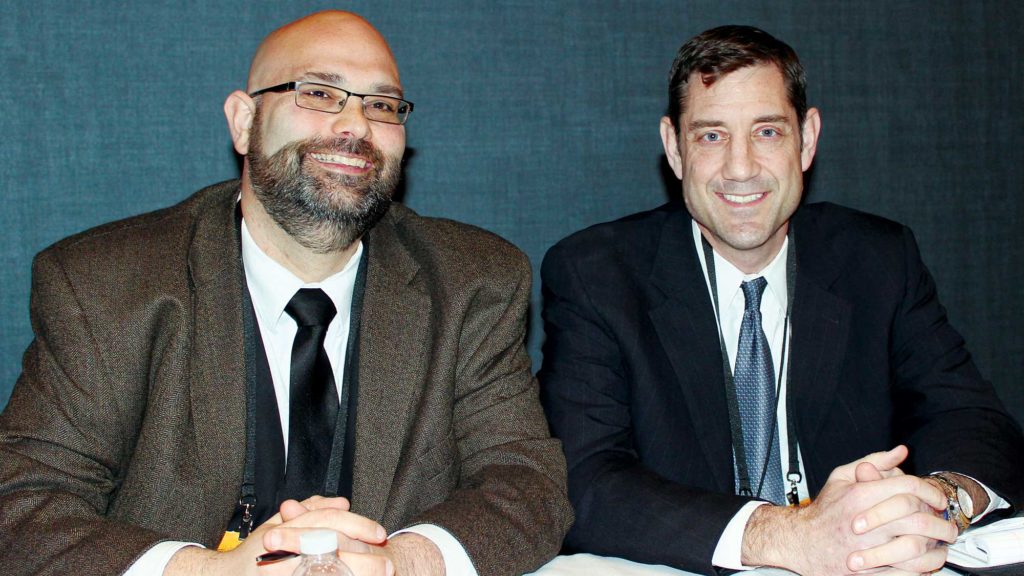ORLANDO, FL — Nursing homes’ most powerful lobbyist said Friday he is generally optimistic about the government’s sweeping new payment system. But Mark Parkinson also expressed strong concern about possible regulator responses to expected changes in therapy usage patterns.
The Patient-Drive Payment Model takes effect October 1 but has not been finalized, something that’s creating many anxious stakeholders, including members of the American Association of Directors of Nursing Services and the American Association of Nurse Assessment Coordinators.
Parkinson, the president and CEO of the American Health Care Association, expressed both hope and caution in a keynote address at the groups’ joint annual conference last week.
“It’s complicated, but we think the system [PDPM] actually makes sense,” he told a crowd of 1,300-plus. “If CMS gets it right, which will be hard because there are a lot of moving parts, it could be very good for the sector. We think that even if CMS doesn’t get it exactly right on October 1, it eventually will.”
He urged providers to “double down” to “get really, really good at PDPM.” He noted there are still “a material number” who have not done so yet and they could face “a really hard time” as a result.
He was most concerned, however, about the prospect of regulator crackdowns. While predicting therapy minutes would drop, he added that it would “naive” not to see group and concurrent therapy increasing from less than 1% today to as much as 25% — in other words to levels more commonly found before payment changes around 2011.

“Back when we were paid in such a way that we really could make a free decisions whether to have group or concurrent or not, we didn’t put everybody in group or concurrent,” Parkinson explained. “I don’t think that was done because people were trying to be chintzy on paying therapists. It was being done primarily because it was settings where having group or concurrent works really well for the residents, particularly with the type of residents we were taking back then. There was a lot of orthopedic work. We don’t get a lot of that now so I don’t know if it will go back to 25%.”
He also cited “anecdotal” evidence that shows patients often like working out together in group or concurrent therapy settings.
“Once the pricing changed in 2012 so we didn’t get credit for all the minutes of the people in front of [therapists], it became impossible from a business perspective to do group and concurrent therapy,” Parkinson said. “We could do it — if we wanted to close our doors and shut down as businesses. So everybody very quickly adapted to individual therapy.”
“I hope that CMS doesn’t say, ‘Oh my goodness, they’re doing 10 percent or 15 percent or 25 percent group and concurrent, they must be doing something wrong (and) we have to do an audit,’” he added. “If they do that, I think they’re going to be pretty darn busy because I think a lot of people are going to do it.”
“The key,” he emphasized, is to keep therapy clinically justified and outcomes at the same level, or better.
John Kane, SNF Team Leader at the Centers of Medicare & Medicaid Services, also emphasized outcomes as a key indicator at a session about an hour earlier. But related comments about regulatory oversight caused Parkinson’s anxiety.
Data monitoring is being focused on therapy utilization patterns, Kane said, because of “unmistakable” patterns suggesting gaming of the system, especially at higher levels. PDPM’s “more holistic” nature should dilute such temptations, but regulators will be vigilant nonetheless. Documentation requirements are exactly the same under the two systems, he reminded.
“If your patient doesn’t need group therapy now, if they’re not going to benefit from group therapy now, they won’t benefit from it as of October 1,” Kane asserted. “If they need 720 minutes now, they’ll need it as of October 1. What the patient needs now is exactly what they need as of October 1. They do not change because we change the payment system. And we will be watching. I do not say that as a threat. I say that because it’s about what the patient needs and they don’t change. We’re focused on the patient, collectively.”
There are plenty of precedents to help CMS make comparisons. There is also Kane’s memory of a focus-group meeting with providers, where they admitted they would use 25% or even 50% of group therapy if it were helpfully reimbursed — despite recent provider assertions that individual therapy is the overwhelmingly preferred way to deliver therapy.
“Things like comorbidity coding, mechanically altered diets, therapy intensity and duration, and the manner of delivering terms of concurrent and group therapy … we will be looking to see those things,” Kane said. “If we see significant shifts in care provision between RUGs-IV and PDPM, that is likely going to draw scrutiny.”
He said that the scrutiny might include extra audits, though it does “not necessarily” guarantee it.
5-Star changes April 24
Earlier in the session, it was announced that previously detailed changes coming to the Five Star Quality Rating system, including the lift of an 18-month freeze on survey results, would kick in April 24.
“We’ve raised the bar on quality,” said Evan Shulman, the director of quality and oversight in CMS’s Division of Nursing Homes.
“For those who did great on most their most recent surveys, you’ll get the benefits of that greatness, and for those who did not do so great, that will negatively affect your rating,” Shulman said.
Parkinson explained that AHCA’s internal analyses showed that about half of the country’s roughly 15,000 nursing homes will stay the same, one-third will drop in ratings and one-sixth will see a rise.
“That doesn’t sound very dramatic, but building by building, there are some very dramatic results,” he said. He noted that a small number of buildings will fall from 5 stars to 1 star.
“There are some buildings that will go from one star to five stars,” he added. “They are going to wake up April 24 and say, ‘This is the greatest day of my life.’”




